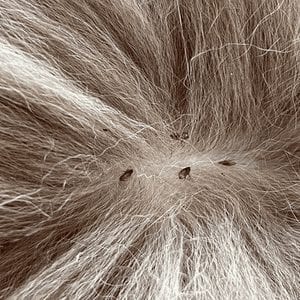Does My Cat Have Fleas?

Cats are known for their grooming and cleanliness, but this doesn’t make them immune to fleas. Fleas are blood-sucking pests, and getting rid of them is tricky and time-consuming. Even your indoor cat isn’t safe, since fleas can hitch a ride on your clothes or shoes.
Here are some common signs that point to fleas that we hope will answer the question many cat owners ask themselves, “does my cat have fleas”?
1. Increased Scratching
Flea bites are very itchy, so the first sign of flees is usually increased scratching and biting. If your cat scratches herself more than usual, especially around the head and ears, she might have fleas. Chewing skin can be another sign.
2. Excessive Grooming
Some cats will start grooming excessively when they have fleas, especially their hind legs, backside, and the area around the tail. You might notice wet patches of fur or even a lack of hair in certain areas. Cats will often eat the fleas before you can notice them, but new ones will keep coming.
3. Agitation
Flea bites are uncomfortable and might make your cat act restless and erratic. If your cat starts running around the room for seemingly no reason, growling, meowing excessively, or seems stressed all the time, it might be because of fleas.
4. Avoiding Parts of Your Home
If your cat is suddenly avoiding certain areas of your home, it might be a sign of fleas. Fleas live and thrive in warm environments, and the carpet is the perfect place for them to settle. Take special notice of your cat’s bed, carpeting, and furniture, and be aware of whether they suddenly stop lying down in their bed or on the carpet.
5. Fleas and Flea Dirt
Brush your cat regularly. Fleas are tiny, reddish-brown bugs. They move fast, so they can be hard to find in a cat’s thick fur; if you see them, your cat is probably heavily infested. Another indicator is small, pepper-like flakes that can be found on your cat or her bed. These are flea droppings. If you mix them with water, they will turn red because they’re mostly blood.
6. Anemia
If the amount of fleas is large enough, flea anemia might occur. This is most common in kittens, sick and senior cats. Some symptoms include weakness, pale gums, tiredness, loss of muscle, and appetite.
7. Weight Loss
Fleas can carry tapeworm eggs, so if your cat eats an infected flea, the tapeworm will grow to full size inside her stomach. Your cat can experience sudden weight loss. You can recognize a tapeworm infection by noticing white, rice-shaped segments in the poop.
Get Help
Are you still asking yourself, “does my cat have fleas”? Are you wondering if you have a flea infestation? Contact NJ Pest Control today. Let us free your cat from this sometimes painful and itchy, red bump nuisance. But to help your cat, it is vital to remove existing fleas and eggs within the home.

